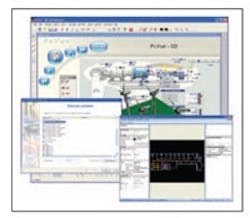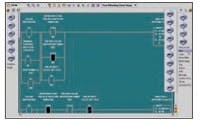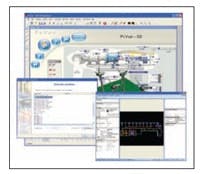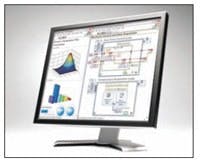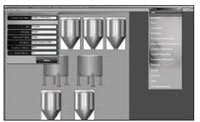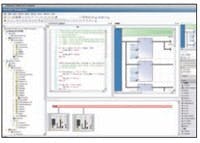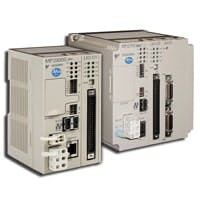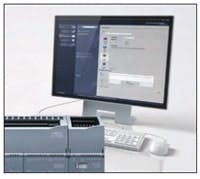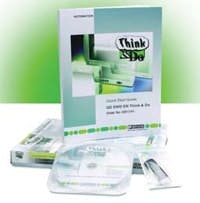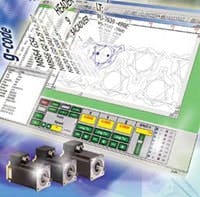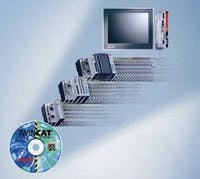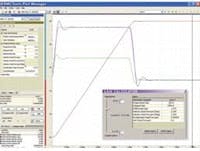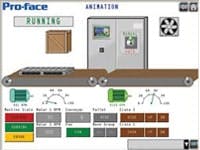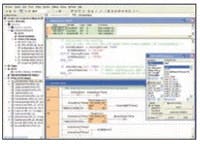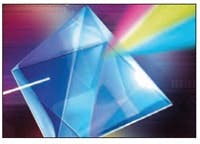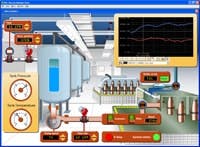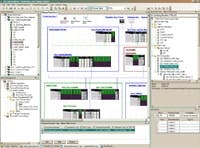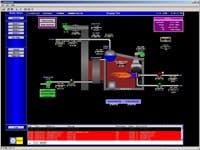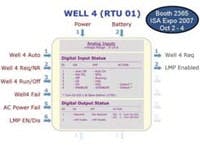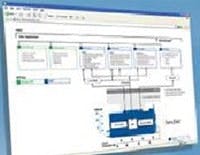Control Software Is Sweeter in Suites
One advantage of using an all-inclusive software suite that includes control is pricing, says Ted Thayer, automation systems product manager for Bosch Rexroth (www.boschrexroth.com). "Another advantage is program organization for multiple machine components. Drives, PLC and HMI can all be accessed from a single project explorer tree."
Another primary advantage of suites is ease of use, says Charlie Norz, product manager – Wago-I/O-System (www.wago.us). "Comprehensive control software that includes typical functions, such as programming and visualization, is often very intuitive and can significantly streamline project commissioning," he says.
"When you have different software forming a suite, and you have that interoperability, there's an opportunity to develop a ‘common tagname database,’ which allows you to create and assign I/O variable names once and then use them over and over again across the entire suite of other software components—your HMI development package, your database integration software," says Ben Orchard, systems engineer at Opto 22 (www.opto22.com). "Each of these components is independent and doesn't rely on the others, but at the same time, can still access and use the established tagname database."
Customers can seamlessly layer other parts of the suite, and it also provides a consistent approach to configuration, reuse of common components across the suite, licensing, security and maintenance of solutions, says Prasad Pai, iFix product manager at GE Fanuc (www.gefanuc.com). "But if the control software is very dependent on the other parts of the suite for its basic operation," says Pai, "then the solution can be very expensive and closed for any external integration."
Instead of managing multiple licenses, a suite reduces that number to one, says Stephen Arnold, senior automation product marketing specialist at Schneider Electric (www.us.schneider-electric.com). "A large benefit to users relates to the ability to create a database for different hardware—PLCs, HMI—through one editing session," he says. "This helps to eliminate the errors that can be introduced by creating multiple databases individually for each piece of hardware. Software suites offer the user a solution that will be better integrated and easier to employ than may be the case when using multiple, individual software programs that have not been bundled and tested together."
Support also comes from one vendor rather than multiple, says Bjoern Falke, product marketing senior specialist at Phoenix Contact (www.phoenixcon.com). "One disadvantage, however, is that you possibly lose some flexibility," he adds. "For example, you like the control software from Supplier A, but like a different HMI/visualization software from Supplier B. In that case, you would have to do more testing to make sure the two different packages work with each other. Sometimes you need special drivers."
The advantages of a software suite depend on the level of data integration between the software products and the consistency of the user experience, says Fabio Malaspina, product manager at Rockwell Automation (www.rockwellautomation.com). "Some control vendors develop products at different times by varying engineer teams for multiple purposes," he explains. "Unfortunately, these same products are often loosely packaged in a suite offering. This lowers productivity by requiring users to enter the same data multiple times in different software products, all with separate user interfaces."
KW Software's Multiprog and ProConOS requires a one-time design to leverage control know-how into different control platforms. KW SoftLogic creates single tagging database and HMI software, and shares the same tagging database by OPC server under Windows CE operating system. Multiprog supports all standardized IEC 61131-3 programming languages.
Advantech Industrial Automation Group
800/205-7940
www.advantech.com
770/889-7876
479/646-4711
952/890-0000
360/254-8688
The CX-One software package integrates PLC programming software with support software for setting up networks, operator interface HMIs, servo systems, inverters and temperature controllers. Users never enter the same information twice and can manage entire projects from sequencing and motion control programs to configuration of field network devices without leaving the operating environment. Advances in CX-One v.3 enable programmers to use IEC 61131-3 programming languages, including sequential function chart and structured text.
Omron Electronics
847/843-8081
www.omron247.com
770/886-5878
978/670-8700
540/633-3400.NET COMPONENT
ASC.NET has driver support for Logix processors via Ethernet; A-B PLC5, SLC500 and MicroLogix via Ethernet; Modbus/TCP Master; GE SRTP; and Modbus RTU Master. HMI/SCADA developers have a runtime-free option for creating HMI, control and supervisory control applications in Visual Studio .NET. The drivers provide the communications link between .NET applications and industrial controllers, PLCs and instrumentation.Automation Solutions707/578-5882
